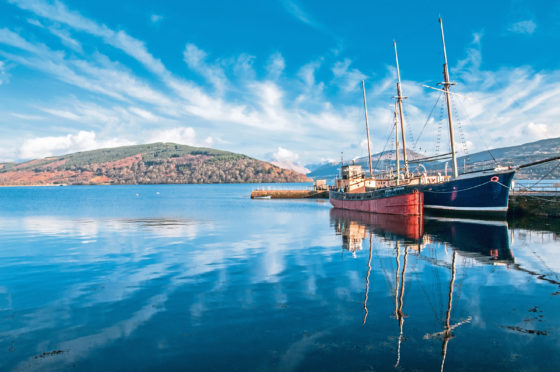
It is one of the most iconic foods in the world, with everyone from peasants to royalty enjoying its taste throughout history.
But how much do you really know about the delicacy?
Here, Kelsey Thompson of the Loch Fyne Oysters hatchery opens up to Alice Hinds.
Why are Scotland’s waters so good for growing oysters?
The purity of Scotland’s waters, particularly in areas of low population such as Loch Fyne in Argyll, helps oysters grow in a non-polluted, nutrient rich environment. The west coast of Scotland benefits from the warm waters from the Gulf Stream that combine with natural nutrients that run off the land with rainfall.
These two elements combine, making a perfect combination of warm, crystal-clear water packed with natural feed for our oysters which helps them develop an exquisite flavour and quality for which they are known the world over.
How are oysters farmed and how long does it take?
Oysters start microscopically small as seeds. They’re grown at our hatchery until they are about the size of a thumbnail, before being transplanted into the loch.
Loch Fyne oysters are grown in special baskets for two to three years; these rock back and forth gently with the loch’s tide, helping each oyster develop an optimum shape and meat content.
Nothing else is added to the oysters – they filter and feed on naturally occurring phytoplankton (algae) in their environment until they reach the perfect size.
How can you tell which oysters are good to eat?
We put each oyster through a strict depuration process for 42 hours after being harvested. When packing the oysters, we have a special ritual to check for freshness, which involves tapping two oysters together – if the sound is hollow, we know the oyster is dead. What we should hear is similar to the sound of two stones tapping together, meaning that the oyster is healthy and will have a long shelf life, allowing us to export around the world to destinations including Dubai, Hong Kong, Jamaica and Barbados.
What’s the process for shucking and preparing a fresh oyster?
Oysters can be shucked and eaten raw, with a squeeze of lemon, or cooked under the grill in a variety of ways – it’s really down to personal preference.
The head chef at our Oyster Bar in Cairndow, Calum Hall, recommends carefully holding the oyster on a sturdy surface with its flat side facing upwards, before using an oyster knife to gently open the oyster by inserting it into the hinge – the knife should be twisted, not pushed. The oyster inside can then be loosened from the shell before it’s eaten.
Has a pearl ever been found in a Loch Fyne oyster?
The species of oyster grown at Loch Fyne wouldn’t commonly produce a pearl.
When a pearl is formed, what has happened is a grain of sand has worked its way inside the oyster, usually on the sea bed, and gathers layer upon layer of the shell’s coating over time. It could happen. You never know.
Why do oysters have a reputation for being an aphrodisiac?
Oysters are known throughout the world as a food of romance, with 18th-Century lover Casanova reported to start his day with 50 for breakfast.
Oysters contain high levels of heavy metals associated with male fertility such as zinc and magnesium, so that’s where the reputation comes from.
They’re also an all-round healthy food, packed full of vitamins, protein and nutrients.
Is it true that oysters were originally a cheap and plentiful working-class food in the 19th Century?
Native oysters were very abundant in northern European waters in the 19th Century but died out because of overfishing and pollution.
Back then, they were dished out regularly as a bar snack, as street food and used to bulk out pies. In 1860, the British seaside town of Whitstable was sending 50 million tons of oysters to London each year, and by 1900, New Yorkers were eating one million oysters every day.

Enjoy the convenience of having The Sunday Post delivered as a digital ePaper straight to your smartphone, tablet or computer.
Subscribe for only £5.49 a month and enjoy all the benefits of the printed paper as a digital replica.
Subscribe